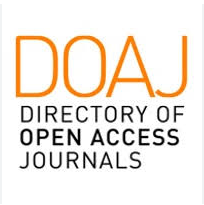Prediktorok a nagy értékű elektronia készülékek vásárlási döntési folyamatban
Absztrakt
Az ügyfélút során tapasztalt nehézségek és bizonytalanságok csökkentik az ügyfélélményt, míg az alacsonyabb bizonytalansági szint növeli az észlelt kontrollt és a bizalmat, ezáltal javítva az ügyfélélményt. A vásárlási döntés során tapasztalt bizonytalanság mértéke összefüggésben áll a csatornával, termékkel, valamint az egyéni jellemzőkkel. A tanulmány célja, hogy megvizsgálja online kérdőíves kutatásunk 415 válaszadójának csatornahasználati szokásai, valamint négy feltételezett prediktor változó csoport - így a demográfiai jellemzők, az ügyfélút korábbi szakaszaiban használt csatornatípus, a vásárlási attitűd és a technológiai felkészültség (TR) - összefüggéseit nagy értékű elektronikai cikkek vásárlásakor. Válaszadóink csatornahasználati preferenciáit vizsgálva 6-féle mintázatot azonosítottunk, amelyből a 4 leggyakrabban előforduló mintázatot tartottuk bent a további vizsgálatokban. A látens változók mérésére (a vásárlási attitűd és a TR különböző dimenzióiban) összeállított magyarázó változók közötti korrelációk feltárására faktoranalízist végeztünk. A magyarázó változók azonosításához multinominális logisztikus regressziót alkalmaztunk. Amellett, hogy a prediktorok mind a négy csoportja tartalmaz olyan tényezőket, amelyek mérhető hatást mutattak a válaszadók csatornaválasztására, fontos kiemelni a fizikai érintés igényének és az ügyfélút korábbi szakaszában használt csatorna típusnak a hatását, amelyek vizsgálatunkban a legerősebb prediktoroknak bizonyultak. Eredményeink értékelésénél fel kell hívni a figyelmet arra, hogy a négy azonosított vásárlási mintázat kategória erősen eltérő arányban képviseltette magát a mintában, jelentősen rontva ezzel az algoritmus tanulási hatékonyságát. Így modellünk elsősorban a mintában felülreprezentált “Blended” mintázatú kategóriára tekinthető alkalmazhatónak.
Hivatkozások
Állami Számvevőszék, 2022. Elemzés, A techipar, az e-kereskedelem, a magyar termékek kereskedelme és a kapcsolódó uniós szabályozásnak az elemzése [WWW Document]. URL https://www.asz.hu/dokumentumok/E2124_Techipar_e_ker.pdf (accessed 4.3.24).
Baird, N., Kilcourse, B., n.d. Omni-Channel Fulfillment and the Future of Retail Supply Chain 31.
Brashear, T.G., Kashyap, V., Musante, M.D., Donthu, N., 2009. A Profile of the Internet Shopper: Evidence from Six Countries. J. Mark. Theory Pract. 17, 267–282. https://doi.org/10.2753/MTP1069-6679170305
Chiu, H.-C., Hsieh, Y.-C., Roan, J., Tseng, K.-J., Hsieh, J.-K., 2011. The challenge for multichannel services: Cross-channel free-riding behavior. Electron. Commer. Res. Appl., Special Issue on Electronic Auctions: Strategies and Methods 10, 268–277. https://doi.org/10.1016/j.elerap.2010.07.002
Davis, F.D., Venkatesh, V., 1996. A critical assessment of potential measurement biases in the technology acceptance model: three experiments. Int. J. Hum.-Comput. Stud. 45, 19–45. https://doi.org/10.1006/ijhc.1996.0040
Dolbec, P.-Y., Chebat, J.-C., 2013. The Impact of a Flagship vs. a Brand Store on Brand Attitude, Brand Attachment and Brand Equity. J. Retail. 89, 460–466. https://doi.org/10.1016/j.jretai.2013.06.003
Frasquet, M., Miquel-Romero, M.-J., 2021. Competitive (versus loyal) showrooming: An application of the push-pull-mooring framework. J. Retail. Consum. Serv. 62, 102639. https://doi.org/10.1016/j.jretconser.2021.102639
Frow, P., Payne, A., 2007. Towards the ‘perfect’ customer experience. J. Brand Manag. 15, 89–101. https://doi.org/10.1057/palgrave.bm.2550120
Gentile, C., Spiller, N., Noci, G., 2007. How to Sustain the Customer Experience:: An Overview of Experience Components that Co-create Value With the Customer. Eur. Manag. J. 25, 395–410. https://doi.org/10.1016/j.emj.2007.08.005
Grewal, D., Gauri, D.K., Roggeveen, A.L., Sethuraman, R., 2021. Strategizing Retailing in the New Technology Era. J. Retail., Re-Strategizing Retailing in a Technology Based Era 97, 6–12. https://doi.org/10.1016/j.jretai.2021.02.004
Grewal, D., Roggeveen, A.L., Nordfält, J., 2017. The Future of Retailing. J. Retail., The Future of Retailing 93, 1–6. https://doi.org/10.1016/j.jretai.2016.12.008
Gu, J., Tayi, G., 2016. Consumer Pseudo-Showrooming and Omni-Channel Product Placement Strategies. https://doi.org/10.13140/RG.2.1.3880.8569
Hungary: e-commerce segment revenue 2017-2025 [WWW Document], n.d. . Statista. URL https://www.statista.com/forecasts/1312894/hungary-e-commerce-segment-revenue (accessed 8.31.22).
Iman Khalid A-Qader, Azizah Binti Omar, Mohammad Rabiul Basher Rubel, 2016. The Influence of Affective Brand Experience Dimension on Brand Equity of the Smartphone Millennial Users in Malaysia. Manag. Stud. 5. https://doi.org/10.17265/2328-2185/2017.01.003
Kang, J.-Y.M., Mun, J.M., Johnson, K.K.P., 2015. In-store mobile usage: Downloading and usage intention toward mobile location-based retail apps. Comput. Hum. Behav. 46, 210–217. https://doi.org/10.1016/j.chb.2015.01.012
Konuş, U., Verhoef, P.C., Neslin, S.A., 2008. Multichannel Shopper Segments and Their Covariates. J. Retail. 84, 398–413. https://doi.org/10.1016/j.jretai.2008.09.002
Lemon, K.N., Verhoef, P.C., 2016. Understanding Customer Experience Throughout the Customer Journey. J. Mark. 80, 69–96. https://doi.org/10.1509/jm.15.0420
Manser Payne, E., Peltier, J.W., Barger, V.A., 2017. Omni-channel marketing, integrated marketing communications and consumer engagement: A research agenda. J. Res. Interact. Mark. 11, 185–197. https://doi.org/10.1108/JRIM-08-2016-0091
Nguyen, A.T.V., McClelland, R., Thuan, N.H., 2022. Exploring customer experience during channel switching in omnichannel retailing context: A qualitative assessment. J. Retail. Consum. Serv. 64, 102803. https://doi.org/10.1016/j.jretconser.2021.102803
Parasuraman, A., Colby, C.L., 2015. An Updated and Streamlined Technology Readiness Index: TRI 2.0. J. Serv. Res. 18, 59–74. https://doi.org/10.1177/1094670514539730
Peck, J., Childers, T.L., 2003. Individual Differences in Haptic Information Processing: The “Need for Touch” Scale. J. Consum. Res. 30, 430–442. https://doi.org/10.1086/378619
Puccinelli, N.M., Goodstein, R.C., Grewal, D., Price, R., Raghubir, P., Stewart, D., 2009. Customer Experience Management in Retailing: Understanding the Buying Process. J. Retail., Enhancing the Retail Customer Experience 85, 15–30. https://doi.org/10.1016/j.jretai.2008.11.003
Quach, T.N., Thaichon, P., Jebarajakirthy, C., 2016. Internet service providers’ service quality and its effect on customer loyalty of different usage patterns. J. Retail. Consum. Serv. 29, 104–113. https://doi.org/10.1016/j.jretconser.2015.11.012
Rese, A., Schreiber, S., Baier, D., 2014. Technology acceptance modeling of augmented reality at the point of sale: Can surveys be replaced by an analysis of online reviews? J. Retail. Consum. Serv. 21, 869–876. https://doi.org/10.1016/j.jretconser.2014.02.011
Rodríguez-Torrico, P., San José Cabezudo, R., San-Martín, S., 2017. Tell me what they are like and I will tell you where they buy. An analysis of omnichannel consumer behavior. Comput. Hum. Behav. 68, 465–471. https://doi.org/10.1016/j.chb.2016.11.064
Santos, S., Gonçalves, H.M., 2019. Multichannel consumer behaviors in the mobile environment: Using fsQCA and discriminant analysis to understand webrooming motivations. J. Bus. Res. 101, 757–766. https://doi.org/10.1016/j.jbusres.2018.12.069
Schneider, P.J., Zielke, S., 2020. Searching offline and buying online – An analysis of showrooming forms and segments. J. Retail. Consum. Serv. 52, 101919. https://doi.org/10.1016/j.jretconser.2019.101919
Schul, Y., Mayo, R., 2003. Searching for certainty in an uncertain world: the difficulty of giving up the experiential for the rational mode of thinking. J. Behav. Decis. Mak. 16, 93–106. https://doi.org/10.1002/bdm.434
Stein, A., Ramaseshan, B., 2015. Customer Referral Behavior: Do Switchers and Stayers Differ? J. Serv. Res. 18, 229–239. https://doi.org/10.1177/1094670514563495
van Baal, S., Dach, C., 2005. Free riding and customer retention across retailers’ channels. J. Interact. Mark. 19, 75–85. https://doi.org/10.1002/dir.20036
Verhoef, P.C., Kannan, P.K., Inman, J.J., 2015. From Multi-Channel Retailing to Omni-Channel Retailing: Introduction to the Special Issue on Multi-Channel Retailing. J. Retail., Multi-Channel Retailing 91, 174–181. https://doi.org/10.1016/j.jretai.2015.02.005
Verhoef, P.C., Lemon, K.N., Parasuraman, A., Roggeveen, A., Tsiros, M., Schlesinger, L.A., 2009. Customer Experience Creation: Determinants, Dynamics and Management Strategies. J. Retail. 85, 31–41. https://doi.org/10.1016/j.jretai.2008.11.001
Verhoef, P.C., Neslin, S.A., Vroomen, B., 2007. Multichannel customer management: Understanding the research-shopper phenomenon. Int. J. Res. Mark. 24, 129–148. https://doi.org/10.1016/j.ijresmar.2006.11.002
Walsh, G., Mitchell, V.-W., 2010. The effect of consumer confusion proneness on word of mouth, trust, and customer satisfaction. Eur. J. Mark. 44, 838–859. https://doi.org/10.1108/03090561011032739
Wang, J., Wang, S., 2022. Revisiting the showrooming effect on online and offline retailers: The strategic role of in-store service. J. Retail. Consum. Serv. 66, 102884. https://doi.org/10.1016/j.jretconser.2021.102884
WebMa, 2022. E-commerce statisztikák és trendek 2022. WebMa Blog. URL https://blog.webma.hu/online-marketing/e-commerce-statisztikak-es-trendek-2022/ (accessed 4.3.24).


























